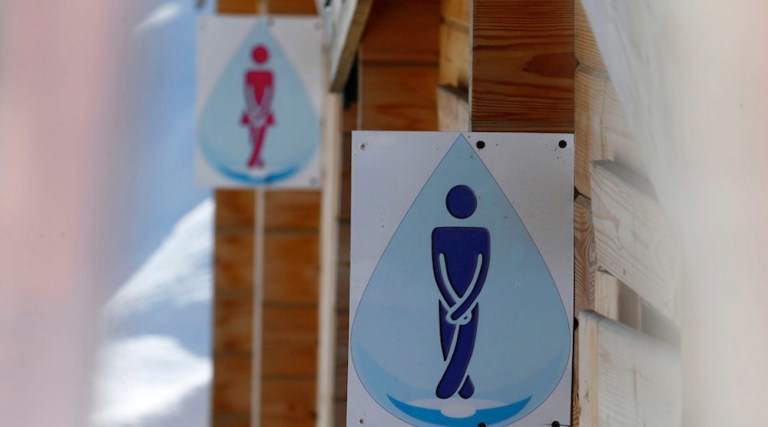Kings Never Had It So Good: Behold The Rise Of Smart Toilets And Bathrooms

One often hears that many people, especially in the most prosperous countries of the West and Asia, live better than the kings and queens of past centuries. (Given one’s tolerance for constant media attention and nonstop family drama, one might also say that many people live better than the current British monarch, but that’s another topic.)
The internet and pocket-sized mobile devices offer access to information outside the grasp of the most educated monks and scholars. Consumers at all income levels can buy goods and services — a wider, fresher variety of food than was available even at major trade-route crossroads, for example, or music from all parts of the globe and virtually all cultures, including extinct ones — that would have confounded even the most arrogant emperor.
Now comes the latest way in which relatively normal consumers are outdoing the royalty of old — one of the latest examples of how “big data” and digital technology are changing the way people go about some of the most basic and intimate of human functions — behold the rise of the smart toilet and bathroom.
Tech Testing Point
It’s not exactly news that the emerging ecosystem called the Internet of Things promises to change the way people heat and cool their home, buy groceries, make their morning pick-me-up beverages and perform other daily tasks that, in the days of divine-right monarchs, would have taken groups of servants hours to complete. One can hardly go more than a day or two without hearing about some exciting product launch centered around IoT.
But, one prime test for the usefulness of a technological development is whether it really does change those fundamental activities of humanity. Bathrooms and public restrooms are not only places of, uh, biological necessity, but sources of political and cultural controversy — look no further than the never-ending tension about letting homeless people and other non-customers use washrooms inside coffee shops and other business, or the debate over Target’s policy of letting its transgender customers use the restroom that matched their gender identity.
Internet of Things technology might not solve those problems — let’s just go out on a limb and say it won’t — but there are products and services in the works that could chip away at some of the frustrations inherit with public restrooms. Janitorial service providers are already trying to get ahead of the curve on that.
Cleaner Rest Stops
Action Unlimited Resources, which serves the Southern New Jersey and Delaware Valley area, is pitching IoT technology to its clients, saying it allows “teams to deploy critical resources when and where they are needed most to increase efficiency and enhance the guest experience.” Among the examples it offers is the lowly rest stop bathroom break.
“With 20, maybe even 30 other people also in the restroom at the same time, the toilet paper dispensers run low, the soap dispensers must be refilled, trash overflows the waste receptacles, and the floors must be cleaned,” the company said on its website, highlighting the “crowdsourcing” aspect of cleaning those spaces. “There is a way for patrons to use their mobile phones and tablets to quickly alert the facility team of a problem. Even better, imagine that, as corrective action is taken, the work is logged, and the patron is thanked for their time and consideration in notifying staff of the problem.”
There is also technology designed to reduce the frustration of waiting in restroom lines at restaurants and coffee shops, and to make money from people using those facilities who do not buy anything from the restroom owner — and doing it all through mobile apps and QR codes. The idea is for the customer to digitally secure a place in the restroom line — no more standing in front of the door — and to charge a small fee to non-customers, monetizing a piece of real estate that normally would not produce revenue.
Home Installations
But what about the home? How far will consumers go in letting technology help them with relieving and cleaning themselves?
Already, much of humanity — the prosperous populations, at least — has moved way beyond the bathroom experiences of all those old kings, many of whom used holes in benches inside their cold, damp castles, with the waste simply collecting in a pit below. Picture those old-school latrines at summer camp to get the general idea.
Companies are betting that enough consumers want enhanced bathroom experiences to make sale of that technology profitable in the years to come.
At this year’s Consumer Electronics Show, for instance, Kohler Co. introduced KOHLER Konnect, “a new platform and suite of smart fixtures that can interact with their owners through voice commands, adapt to user preferences and collect data to provide valuable water usage feedback.” The technology enables consumers to “adjust water temperature; control shower heads and body sprays; and adjust music, lighting, steam and shower duration — all by simply speaking to the shower. The app also can automatically, and from anywhere in the home, fill a bath at precisely the desired depth and temperature, or assist in the kitchen by providing measured water from the faucet on demand.”
LG, meanwhile, worked with bathroom remolding firm Inus Bath to build what one report described as, “bidet toilets and ventilators with WiFi connections that can be controlled via smartphones.” A consumer might want to, for instance, set the toilet so that the ventilator turns on when a person sits down on the toilet seat, among other tasks.
The vision of the Internet of Things keeps expanding even as technology develops to enable the connections that will make all those dreams possible. It’s hard to imagine IoT coming into being without finding a way inside bathrooms and public restrooms, and it will be interesting to see how smart those locations become over the years.